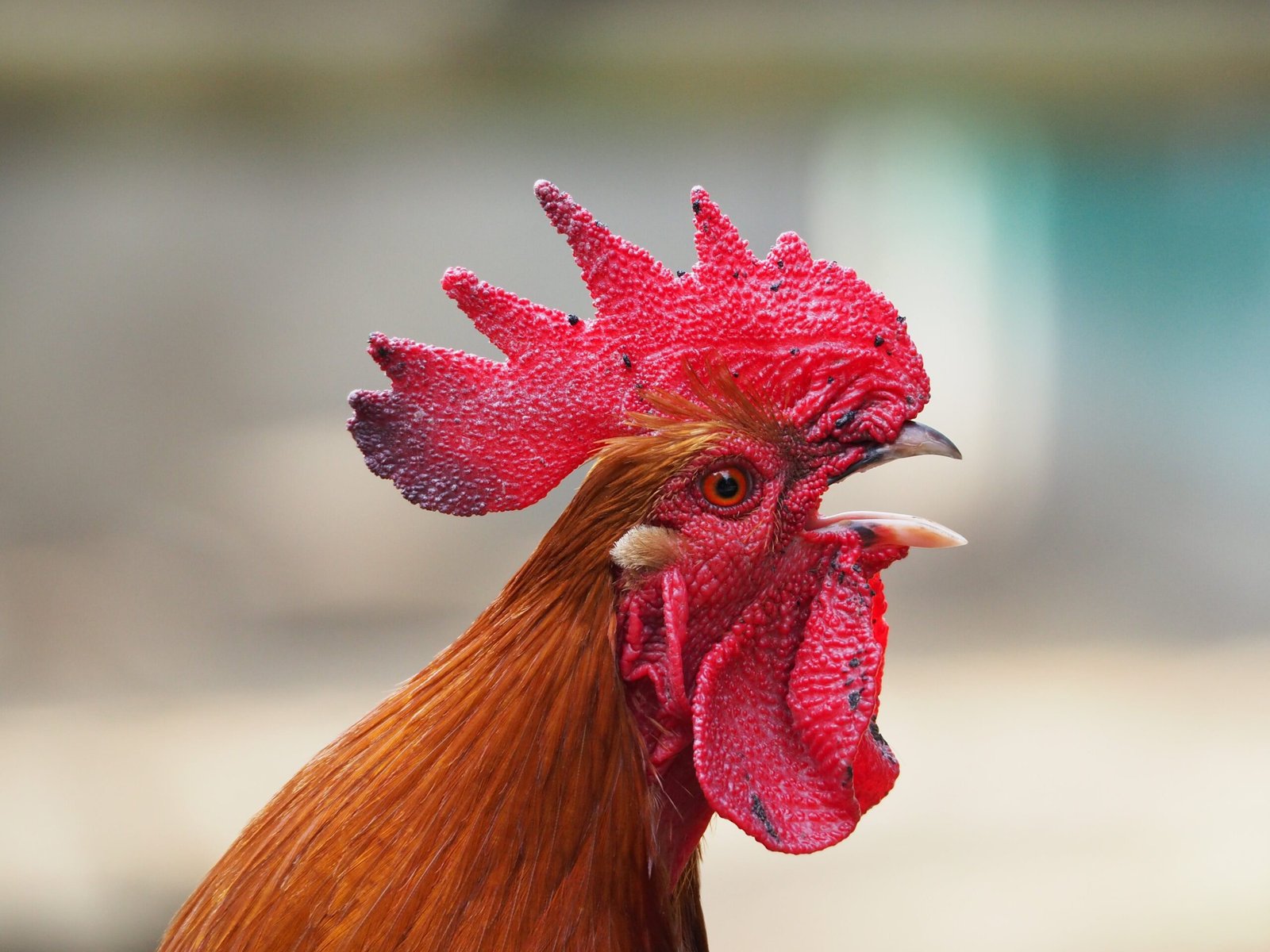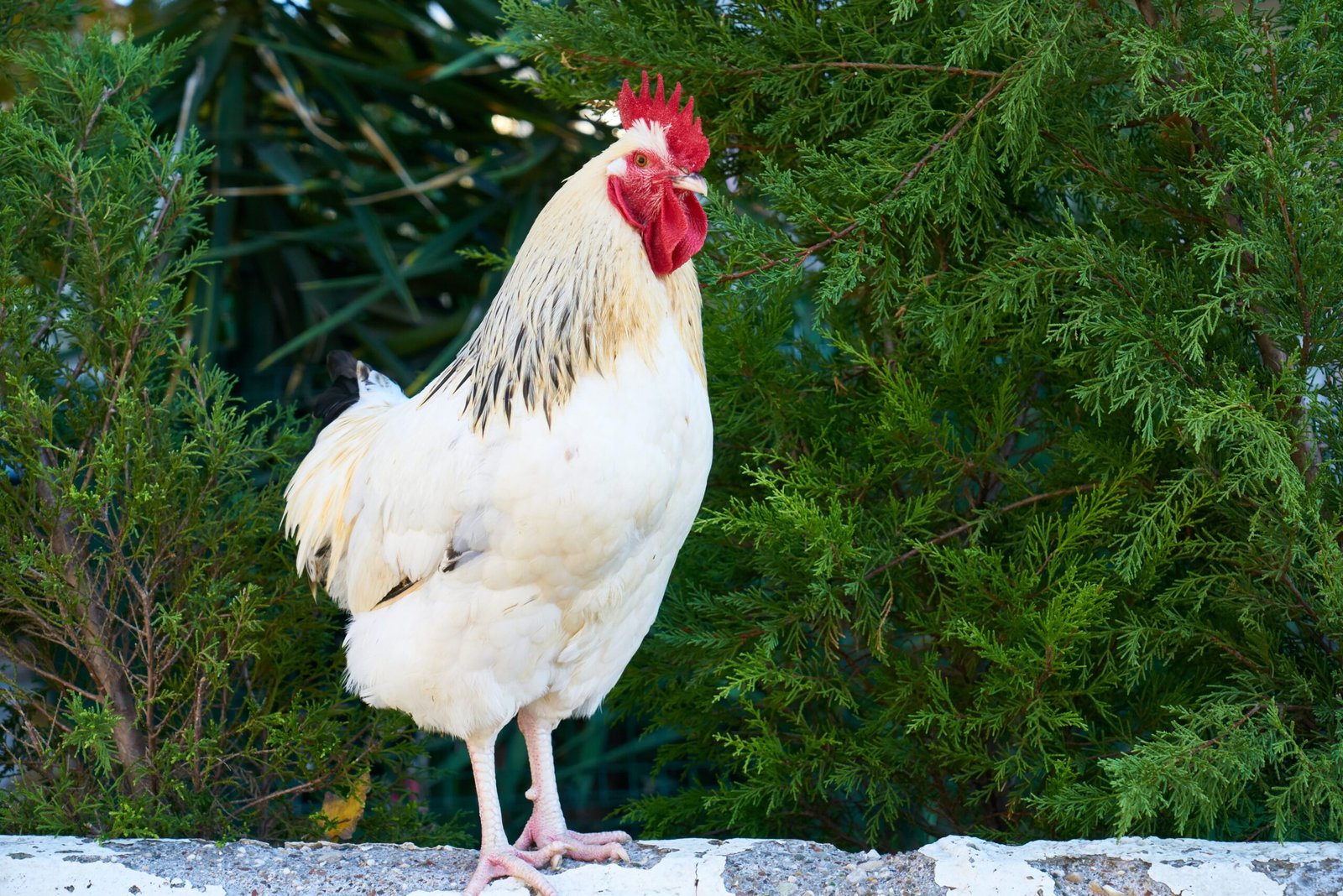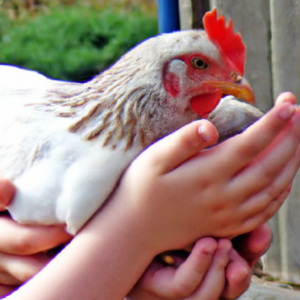
Have you ever wondered how to tell if your rooster is feeling broody and what steps you should take in such a situation? Well, look no further! In this article, we will explore the signs that indicate a broody rooster and offer some advice on what you can do to help him. Whether you’re a seasoned chicken keeper or new to the world of roosters, this information will be invaluable in understanding and caring for your feathered friend. So, let’s jump right in and discover how to decipher the behavior of your broody rooster!

Signs of a Broody Rooster
If you have a rooster in your flock, it’s important to be able to recognize the signs of broodiness. Broody behavior in roosters can have implications for the overall dynamics of the flock and can also impact egg production and fertility rates. By observing their behavior and physical signs, you can identify if your rooster is broody and take appropriate action.
Decreased Interest in Mating
One of the first signs of a broody rooster is a decreased interest in mating. Typically, roosters are highly active and eager to mate with hens. However, when a rooster becomes broody, their interest in mating significantly decreases. They may show disinterest in chasing hens or mounting them, which is usually a clear indication that something is amiss.
Increased Time on the Nest
Another sign of broodiness in roosters is an increased amount of time spent on the nest. Broody roosters will exhibit nesting behavior similar to broody hens, with prolonged periods sitting on the nest. This behavior is different from typical rooster behavior, as they are usually more active and focused on patrolling and protecting the flock.
Puffed Feathers and Broody Call
When a rooster is broody, they may display puffed feathers and a broody call. Puffed feathers give them a fluffed-out appearance, and they may look larger than usual. Additionally, broody roosters may emit a unique call, similar to broody hens. This vocalization is different from their typical crowing or squawking and serves as a communication method during the broody phase.
Aggression Towards Other Roosters
Broodiness can also lead to increased aggression towards other roosters. When a rooster is broody, they become highly territorial and may exhibit aggressive behavior towards other males in the flock. This aggression can include charging, pecking, and even physical fights. It’s important to address this behavior to maintain a harmonious flock environment.
Observing Behavior and Physical Signs
To assess whether your rooster is truly broody, it’s essential to observe their behavior and physical signs more closely. By doing so, you can confirm their broodiness and better understand how to address the situation.
Decreased Interest in Mating
Observe your rooster’s behavior during mating attempts. If they consistently show disinterest or lack of enthusiasm when engaging with hens, it signals a decreased interest in mating. This could be due to broodiness, and further observation will help confirm the suspicion.
Increased Time on the Nest
Take note of how often your rooster spends time on the nest. If they are consistently found on the nest for extended periods, unrelated to egg-laying or typical behavior, it’s a strong indication that they are broody. Keeping track of their nesting habits will help you identify patterns and determine the extent of their broodiness.
Puffed Feathers and Broody Call
Observe your rooster’s appearance and vocalizations. If they have puffed feathers and a broody call, it is a clear sign that they are in a broody phase. The fluffed-out appearance is a result of hormonal changes and preparations for incubating eggs. The unique vocalizations serve as a communication tool during this period.
Aggression Towards Other Roosters
Monitor how your rooster interacts with other roosters in your flock. If you notice increased aggression, such as chasing, pecking, or fighting, it is likely attributed to the broodiness. Broody roosters become territorial and protective, which can lead to confrontations with other males in the flock.

Assessing Nesting Behavior
Broody roosters exhibit specific nesting behavior that differentiates them from non-broody roosters. By paying attention to these behaviors, you can gather valuable information about their broody status and adjust your approach accordingly.
Extended Time Spent on the Nest
Take note of the duration your rooster spends on the nest. Broody roosters will spend hours on the nest, not just for the purpose of egg-laying, but as a way to incubate imaginary eggs. If you find your rooster sitting on the nest for prolonged periods, it indicates broodiness.
Refusal to Leave Nest
Observe whether your rooster is reluctant to leave the nest. If they resist leaving the nesting area, even when encouraged or lured away, it confirms their broody behavior. Broody roosters become extremely dedicated to their imaginary eggs and may refuse to budge from the nest.
Hoarding Eggs
Broody roosters may start hoarding eggs in the nest. They often collect and position eggs as if they were preparing to incubate them. If you find multiple eggs stored in the nest or notice your rooster arranging eggs, it is a strong indication of their broodiness.
Growling or Clucking Sounds
Listen for any growling or clucking sounds coming from the nesting area. Broody roosters vocalize with different pitches and tones than their usual crows and squawks. These vocalizations serve as a form of communication with the imaginary chicks they believe they are caring for.
Physical Signs of Broodiness
In addition to behavioral cues, there are physical signs that can help confirm the broodiness of your rooster. Pay attention to these physical indicators to gain a comprehensive understanding of their broody status.
Puffed Feathers and Fluffed Out Appearance
One of the prominent physical signs of broodiness in roosters is their puffed feathers and fluffed-out appearance. They will fluff up their feathers to create a cozy and warm environment for their imaginary eggs. This physical change makes them look larger and more rounded than their usual sleek appearance.
Warm Vent Area
When a rooster becomes broody, their body undergoes hormonal changes, leading to increased blood flow to the vent area. This results in a warm vent area when you touch or feel it. The warmth is an indication that your rooster’s body is preparing for the incubation process.
Pale Comb and Wattles
Another physical sign of broodiness is a change in the color of the comb and wattles. Normally, a healthy rooster will have vibrant and bright-colored combs and wattles. However, when they enter the broody phase, these areas may become pale or dull in color. The change is due to hormonal shifts and redirected blood flow.
Loss of Appetite
Broody roosters may experience a decreased appetite during their broody phase. The hormonal changes and focus on incubation can lead to a decreased interest in food. If you notice that your rooster is eating less or seems less interested in feeding, it can be attributed to their broody behavior.

Implications of a Broody Rooster
Understanding the implications of having a broody rooster in your flock is crucial. It not only affects the individual rooster but can also have broader consequences for the overall flock dynamics and egg production.
Impact on Flock Dynamics
A broody rooster’s territorial and protective behavior can disrupt the overall flock dynamics. The aggression towards other roosters can create tension and potentially lead to fights, injuries, or stress among the flock members. It’s important to address this behavior to maintain a harmonious and peaceful flock environment.
Decreased Fertility Rates
When a rooster is broody, their focus shifts from mating to incubation. This can result in decreased fertility rates as they become less interested in mating with hens. The decrease in viable fertilization can impact the overall egg production and hatching success of the flock.
Disruption of Egg-Laying Cycle
Broody roosters can disrupt the egg-laying cycle of the hens in the flock. Their presence in the nesting area can deter hens from laying eggs or disturb their natural nesting behavior. This disruption can result in fewer eggs being laid or a delay in egg-laying, affecting the flock’s productivity.
Increased Risk of Disease
The extended time spent on the nest coupled with hormonal changes makes broody roosters more susceptible to health issues. They may have a weakened immune system and be more prone to infections, mites, or parasites. It’s crucial to monitor their health and hygiene closely to prevent the spread of diseases within the flock.
Addressing Broodiness
Once you have identified that your rooster is broody, it’s important to take appropriate action to address the situation. The steps you take will depend on your desired breeding outcome and the resources available to you.
Determining Desired Breeding Outcome
Before implementing any strategies, consider your desired breeding outcome. Are you looking to hatch chicks naturally or prefer to control breeding through artificial methods? Understanding your goals will help guide your approach in addressing broodiness.
Selective Breeding
If you wish to control breeding more selectively, consider separating the broody rooster from the hens. This can be done by providing a separate enclosure or pen for the rooster. By isolating them, you can prevent them from engaging in any further nesting behavior and redirect their focus.
Use of Incubators
If you want to hatch chicks but prefer to have more control over the process, using an incubator is a viable option. Collect the eggs laid by your hens and place them in the incubator. The incubator will provide the necessary conditions for successful egg incubation, bypassing the need for a broody rooster.
Egg Replacement Strategies
Alternatively, if you don’t want to involve a broody rooster or incubator, you can replace the eggs in the nest with dummy eggs or remove them altogether. This will discourage the broody behavior by removing the stimulus for incubation. Dummy eggs can be made from materials such as wood or plastic and placed in the nest to replicate real eggs.
Strategies for Dealing with a Broody Rooster
If you prefer to allow your broody rooster to fulfill their natural instincts, there are strategies you can employ to manage their behavior effectively and minimize any potential disruptions within the flock.
Provide a Broody Hen or Dummy Eggs
One option is to provide a broody hen or dummy eggs for your broody rooster. Broody hens instinctively know how to care for and incubate eggs, and introducing one to your rooster can help satisfy their broody instincts. Alternatively, placing dummy eggs in the nest can also give the rooster a sense of purpose and discourage aggression towards other flock members.
Removing Eggs Regularly
To prevent your broody rooster from becoming more entrenched in their broody behavior, make it a habit to remove eggs from the nest regularly. By doing so, you eliminate the opportunity for them to accumulate eggs and further reinforce their desire to incubate. Regularly collecting eggs will break the cycle and redirect their focus.
Interrupting Nesting Habits
Disrupting your broody rooster’s nesting habits can help break their broody behavior. Gently but consistently remove them from the nest whenever you observe them settling in. This interrupts their nesting routine and discourages further nesting behavior. Be patient and persistent, as it may take some time for the behavior to subside.
Designating a Separate Area
Consider designating a separate area specifically for broody roosters. This can be a small, isolated coop with all the essentials for incubation, such as nesting materials and a comfortable nesting area. By providing them with their own space, you allow them to fulfill their broody instincts without disturbing the rest of the flock.
Behavior Modification Techniques
In addition to the strategies mentioned above, there are behavior modification techniques that can be employed to address the broodiness of your rooster effectively.
Physical Disturbance
Physically disturbing your broody rooster can help snap them out of their broody behavior. Gently lift and move them away from the nesting area or expose them to environmental changes, such as changes in lighting or temperature. These disturbances can help redirect their focus and decrease their broody tendencies.
Adjusting Lighting and Temperature
Broodiness can be influenced by lighting and temperature conditions. By adjusting these factors, you can help reduce the broody behavior of your rooster. Use timer-controlled lights to simulate natural daylight and regulate the temperature in the coop or nesting area. These adjustments can help disrupt the hormonal triggers associated with broodiness.
Social Interaction and Distraction
Increasing social interaction and providing distractions can divert your broody rooster’s attention and reduce their broody tendencies. Spend more time interacting with the rooster, engaging them in activities, or introducing new and stimulating elements within their environment. This will help keep them mentally and physically occupied, decreasing their focus on broodiness.
Encouraging Activity and Foraging
Encouraging physical activity and foraging can also help alleviate broodiness. Provide ample space for your rooster to roam and explore, creating opportunities for exercise and natural foraging behavior. By engaging in these activities, their focus will shift away from broodiness and towards fulfilling their natural instincts.
Considering Rooster Removal
In some cases, it may be necessary to consider removing a broody rooster from your flock. This decision should be carefully evaluated, taking into account the overall behavior of the rooster and the safety of the flock.
Assessing Rooster’s Overall Behavior
Before deciding to remove a broody rooster, consider their overall behavior within the flock. If their aggression towards other flock members persists or intensifies, and if it poses a risk to the safety and well-being of the other chickens, removal may be necessary. Evaluate the impact of their behavior on the overall flock dynamics and make a decision accordingly.
Implementation of Safety Measures
If you decide to remove a broody rooster, ensure that you implement appropriate safety measures. Use gloves or other protective gear to handle the rooster and prevent any potential injuries from their aggressive behavior. Take necessary precautions to avoid harm to yourself and the rooster during the removal process.
Rehoming or Culling Options
When removing a broody rooster, you can explore rehoming options to find them a suitable environment where their broody tendencies can be accommodated. Alternatively, if rehoming is not feasible or if the rooster’s aggressive behavior poses a significant risk to others, culling may be considered as a last resort. Ensure that you comply with local regulations and guidelines regarding the humane euthanization of chickens if you choose this option.
Introducing a New Rooster
If you find it necessary to remove a broody rooster from your flock, consider introducing a new rooster to maintain the dynamics within the flock. The new rooster should be carefully selected based on their compatibility with the existing flock members and their breeding objectives. Introducing a new rooster can help restore balance and stability to the flock.
Preventing Broodiness in Roosters
Prevention is always better than intervention when it comes to broodiness in roosters. By implementing certain measures, you can reduce the likelihood of your roosters becoming broody, minimizing disruptions and ensuring optimal flock productivity.
Selecting Breeds with Low Broodiness
When choosing rooster breeds, opt for those with lower broodiness tendencies. Some breeds are naturally less prone to broodiness and will be less likely to display broody behavior. Research different breed characteristics and select those that align with your breeding goals and preferences.
Providing Sufficient Nesting Boxes
Having enough nesting boxes for your hens can discourage roosters from developing broody tendencies. A crowded nesting area can trigger broodiness in roosters as they sense a shortage of proper nesting spots. Ensuring there is an adequate number of nesting boxes will reduce the need for roosters to exhibit broody behavior.
Balancing Light and Dark Cycles
Maintaining a balanced light and dark cycle within the coop can help regulate the hormonal triggers associated with broodiness. Ensure that your chickens receive approximately 12 hours of light and 12 hours of darkness each day. This can be achieved through natural daylight or artificial lighting systems.
Ensuring Adequate Nutrition
Proper nutrition plays a vital role in preventing broodiness in roosters. Ensure that your flock is receiving a well-balanced diet that meets their nutritional needs. A lack of certain nutrients can contribute to hormonal imbalances and increase the likelihood of broodiness. Consult with a poultry nutritionist or veterinarian to optimize your flock’s diet.
In conclusion, recognizing the signs of a broody rooster is essential for maintaining a healthy and productive flock. By observing their behavior and physical signs, such as decreased interest in mating, increased time on the nest, puffed feathers, and aggression towards other roosters, you can identify broodiness in roosters. Understanding the implications of broodiness, addressing it appropriately with strategies like selective breeding, providing a broody hen or dummy eggs, and employing behavior modification techniques, will help manage broodiness effectively. If necessary, removing a broody rooster, implementing preventive measures, or introducing a new rooster can be considered. By being proactive and attentive, you can ensure the well-being of your flock and maintain optimal egg production.







